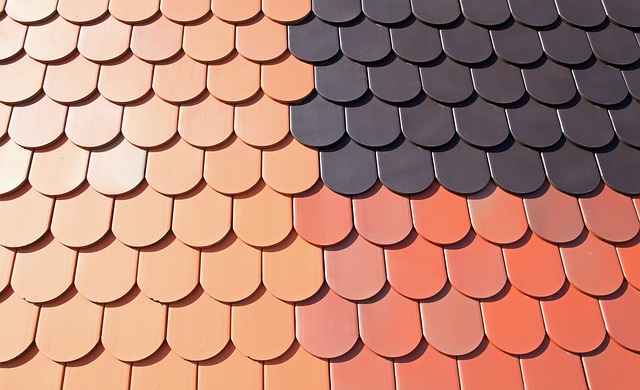Eco-friendly underlayments are essential for enhancing insulation and promoting sustainable construction, especially with green roof systems. Made from renewable or recycled materials like bamboo, cotton, or recycled rubber, these underlayments offer improved thermal insulation, moisture barriers, pest resistance, and environmental sustainability. Green roof installation provides natural insulation, mitigates the urban heat island effect, and supports local ecosystems. Key considerations for optimal performance include proper installation techniques, vertical gardens, effective drainage, and using biodegradable or recycled materials for long-term cost savings and reduced environmental impact. Investing in eco-friendly underlayment is a strategic move that contributes to climate change mitigation while enhancing energy efficiency and aesthetics.
“Discover innovative ways to boost insulation with eco-friendly underlayment options. In today’s quest for sustainable living, understanding the role of materials like natural fibers and recycled content is key. Explore how green roof installation acts as a powerful insulator, offering both environmental and economic benefits. This article delves into the diverse sustainable choices available, installation best practices, and long-term savings associated with these eco-conscious upgrades. Embrace a greener future by enhancing your space with efficient insulation.”
Understanding Eco-Friendly Underlayment: Materials and Benefits
Eco-friendly underlayments are an essential component in enhancing insulation and promoting sustainable construction practices, especially when considering a green roof installation. These underlayments are designed to provide an additional layer of protection and energy efficiency while minimizing environmental impact. Made from renewable or recycled materials such as bamboo, cotton, or recycled rubber, they offer an alternative to traditional synthetic options.
The benefits are multifaceted: they improve thermal insulation, reducing energy loss and lowering heating/cooling costs; they act as a barrier against moisture and pests; and, crucially, they contribute to a building’s overall sustainability, aligning with the growing demand for eco-conscious solutions in construction, particularly when integrated into green roof systems.
The Role of Green Roof Installation in Enhanced Insulation
Green roof installation has emerged as a powerful strategy to boost insulation in buildings, offering both environmental and energy-efficient benefits. By covering rooftops with layers of growing media and vegetation, this eco-friendly approach creates an additional insulating barrier. During the warmer months, the plants provide shade, reducing the amount of heat transferred into the building. Conversely, in colder seasons, the plant material acts as an extra layer of insulation, helping to retain heat inside. This natural process not only minimizes temperature fluctuations but also contributes to a more comfortable indoor environment throughout the year.
The insulation properties of green roofs are particularly notable for their ability to mitigate the urban heat island effect. In dense urban areas, traditional rooftops can absorb and retain heat, leading to elevated temperatures compared to surrounding environments. Green roof installation introduces a cooling mechanism by promoting evapotranspiration from plants, which releases moisture into the air, thereby lowering rooftop temperatures. This eco-conscious solution not only enhances insulation but also supports local ecosystems, providing habitats for urban wildlife and contributing to a greener, more sustainable built environment.
Exploring Sustainable Options: Natural Fibers and Recycled Materials
In the pursuit of enhanced insulation, the choice of underlayment materials plays a significant role in both energy efficiency and environmental sustainability. One of the most eco-friendly approaches involves exploring natural fibers such as wool, bamboo, or hemp. These renewable resources not only provide excellent insulating properties but also contribute to a healthier indoor environment, as they are naturally resistant to mold and pests. Moreover, incorporating recycled materials like reclaimed wood or recycled plastic into underlayment offers another dimension of sustainability by diverting waste from landfills.
The concept of a green roof installation extends beyond the rooftop itself, encompassing the entire building envelope. By opting for natural and recycled underlayments, homeowners and builders can significantly reduce the carbon footprint associated with traditional insulation materials. This shift towards sustainable options not only benefits the planet but also creates more comfortable living spaces by improving thermal regulation and air quality.
Installation Techniques for Optimal Performance
For optimal performance of eco-friendly underlayment, proper installation techniques are crucial. This involves careful preparation of the substrate to ensure a smooth and level surface, which is essential for the effective waterproofing and insulating properties of green roof systems. Professional installers often use specialized equipment to achieve precise cuts and installations, minimizing potential errors that could compromise the structural integrity or insulation value.
One innovative approach in green roof installation is incorporating vertical gardens or green walls as part of the underlayment. This technique not only enhances insulation but also adds aesthetic appeal, providing a biodiverse micro-habitat while contributing to better air quality. Effective drainage and irrigation systems are other critical components that should be seamlessly integrated during installation, ensuring proper water management and preventing potential damage from excess moisture.
Long-Term Savings and Environmental Impact: A Comprehensive Look
Investing in eco-friendly underlayment for insulation isn’t just a trend; it’s a strategic decision with profound long-term implications. Beyond immediate cost savings, these sustainable options significantly reduce energy consumption and greenhouse gas emissions. Traditional insulation materials often contribute to environmental degradation, but green roof installation offers a respite. By choosing biodegradable or recycled underlayments, you’re actively contributing to a healthier planet.
Over time, the reduced energy usage translates into substantial financial savings on utility bills. Moreover, many eco-friendly products come with extended warranties, ensuring long-lasting performance and continued cost efficiency. This comprehensive approach to insulation not only benefits your wallet but also serves as a responsible step towards mitigating climate change, making your space more energy-efficient and environmentally friendly.
In conclusion, eco-friendly underlayment options not only enhance insulation but also contribute significantly to environmental sustainability. By understanding the materials, benefits, and installation techniques discussed in this article, homeowners can make informed decisions that promote long-term savings and a greener footprint. The integration of green roof installation further solidifies these eco-conscious choices as a smart, comprehensive approach to energy efficiency and sustainable living.
